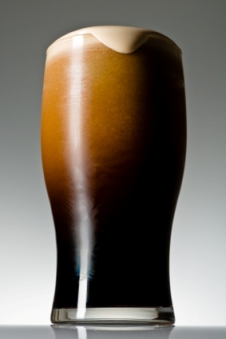 |
| Party time on the Death Star |
I hope
everyone’s All Hallows Eve festivities were safe and memorable. I hope you had
your fill of pumpkin ales and other spooky creations. I hope you got a lot of
candy, and nobody called the cops.
October
is over – November is here. Generally, November beer consists of the pumpkin
beers left over from Hallowe’en and the beers you will pair with your
Thanksgiving feast. Those are both perfectly legitimate ways to categorize your
November beer drinking plans, but there are others, and since we've covered
pumpkin beers ad nauseam and will get to Thanksgiving when we’re a little
closer to the holiday, I propose a third option.
Dark
beers.
A few
years back, I
wrote on the topic of dark beers, specifically to separate myth from
reality and expose the shenanigans that BIG BEER marketing had managed to pull
off regarding light versus dark beer. Now it’s time to further develop the idea
of dark beer, with a focus on the total landscape of what dark beer is and can
be.
Obviously,
everyone knows about stouts. Stouts originated when the Irish decided to one-up
the English by adding darker-roasted barley to the English porter ales to
create a darker, stronger beer. Believe it or not, dry Irish stout (like
Guinness) is only one type of stout porter ale. Other variations include
sweet/milk stout, oatmeal stout, coffee stout, foreign extra stout, American
stout, oyster stout and imperial Russian stout. Some breweries like to
experiment with putting different fruit combinations into stouts, which sounds
weird, but since stouts tend to have chocolate characteristics, blending fruit
with them usually results in a dessert-like beer.
 |
| Look at that cloud! |
The
other style which usually comes to mind when thinking of dark beers is the
porter ale – which is technically the same style as stout, but with less or
slightly lighter grain in it. Porters were created during the Industrial Revolution
in England and were a local favorite among the industrial workers of the day.
Porters are divided into three approved categories: brown porter, robust porter
and Baltic porter, with each getting progressively stronger. I've also seen
imperial porters before, which of course would indicate that the brewer used
more malts and hops than a Baltic porter allows for.
You may
also encounter an English Brown Ale, which range from mild (as in not a lot of
hops) to Southern English or London-style Brown, which are darker, sweeter and
lower gravity than their northern cousins, to the third and strongest Northern
English Brown Ale which are higher gravity, more hop-oriented and drier than
the Londoner varieties. Nut brown ales generally fall into the third category
as well.
If you
leave the UK and travel to Germany, the dark beers move into the lager
category. One such style of dark German lager that is a personal favorite is
the Schwartzbier, or black lager. Schwartzbiers are a variation of a
Munich-style Dunkel but with darker roasted-barley and a touch more hops. The
hops are completely overwhelmed by the malt so the beer is sweet as opposed to
bitter. They have a light body and are typically lower ABV so they are quite
easy to drink.
In
Belgium, they have the Belgian Dark Strong Ale, which isn't typically black
like some of the others I've listed here, but they are dark, very rich, complex
and very strong, bordering on dangerous. They can range up to 12% ABV and are
generally quite full-bodied, depending on the brewery. Malt sweetness and
alcohol dominate the flavor and aroma.
 |
| No... what do they say? |
Here in
the States, we've concocted a beer that is either called black IPA or Cascadian
ale, depending on where you are. Essentially, this is a beer that is heavy in
both hops and dark-roasted barley… think of either a hoppy stout or a dark IPA.
They are usually sweeter than they are bitter and can either be modestly
alcoholic or full-on face-melters.
Of
course, the secret to all of this is the malt. If the ratio of dark-roasted
barley to lighter grains is high, the beer will be dark. It can be any style of
beer, though the forefathers had names for most of the dark applications of
malt… and that’s why we have the BJCP style guide… so we brewers have something
resembling standards by which to design our beers.
Don’t be
afraid of dark beers. They may look menacing, but are generally sweeter than
their lighter counterparts, and are not necessarily “bigger and full-bodied”
the way you might assume they are. Now that it’s November and getting cold
again, they can be a perfect way to stay warm and full of cheer.
Here’s
to craft-brewed happiness… Cheers!
No comments:
Post a Comment